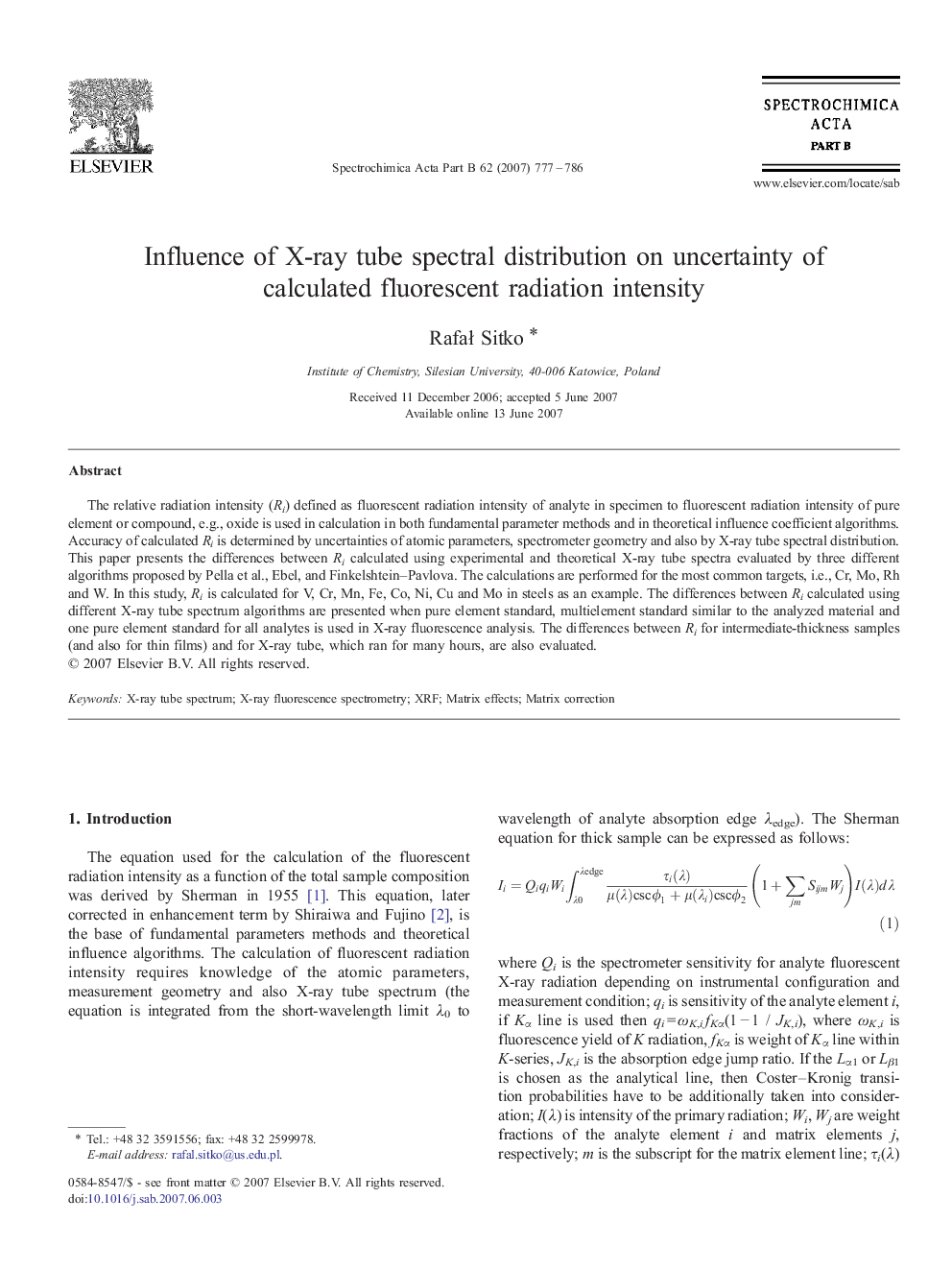| Article ID | Journal | Published Year | Pages | File Type |
|---|---|---|---|---|
| 1241417 | Spectrochimica Acta Part B: Atomic Spectroscopy | 2007 | 10 Pages |
The relative radiation intensity (Ri) defined as fluorescent radiation intensity of analyte in specimen to fluorescent radiation intensity of pure element or compound, e.g., oxide is used in calculation in both fundamental parameter methods and in theoretical influence coefficient algorithms. Accuracy of calculated Ri is determined by uncertainties of atomic parameters, spectrometer geometry and also by X-ray tube spectral distribution. This paper presents the differences between Ri calculated using experimental and theoretical X-ray tube spectra evaluated by three different algorithms proposed by Pella et al., Ebel, and Finkelshtein–Pavlova. The calculations are performed for the most common targets, i.e., Cr, Mo, Rh and W. In this study, Ri is calculated for V, Cr, Mn, Fe, Co, Ni, Cu and Mo in steels as an example. The differences between Ri calculated using different X-ray tube spectrum algorithms are presented when pure element standard, multielement standard similar to the analyzed material and one pure element standard for all analytes is used in X-ray fluorescence analysis. The differences between Ri for intermediate-thickness samples (and also for thin films) and for X-ray tube, which ran for many hours, are also evaluated.
